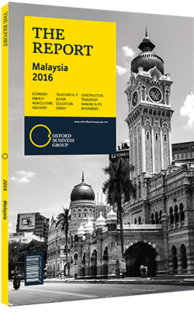Tunku ‘Abidin Muhriz, Founding President, Institute for Democracy and Economic Affairs (IDEAS), on opportunities available in the educational landscape: Viewpoint

The Malaysia Education Blueprint launched in 2013 was the government’s flagship document intending to improve the education system in five key areas: equity, access, efficiency, unity and quality. Some of the initiatives in the blueprint are commendable but the implementation, monitoring and evaluation requires more work. For example, parent toolkits were meant to be compiled and distributed to all parents by the end of 2013, but little seems to have been said about this since. Such initiatives are important especially if parents are to get more involved.
Initiatives such as the Trust Schools project are very positive. Ten schools began the pilot scheme in 2010, but today there are over 30 trust schools, and the first schools have now graduated from the five-year programme. We await the evaluation of the schools eagerly. While it has its merits, we believe the programme can benefit from being more cost-effective with a stronger public-private partnership model.
Our support for choice and competition extends to the issue of language, including whether or not certain subjects should be taught in English or Malay. Although the policy of teaching maths and science in English, introduced in 2003, was shelved in 2009, the recently introduced dual-language programme, which enables an element of parental choice for some subjects to be taught in English subject to certain criteria, has many detractors too. Parents’ groups have been increasingly vocal on this and other educational issues over the last few years, augmenting the debate in Malaysian civil society.
In an effort to explore the choices available to the bottom 40% income earners in Malaysia, in 2013 we initiated our own “Voice of the Poor” research project, which saw 1200 parents interviewed about their children’s education. The study found that 74% of parents would send their children to private school if they had the necessary finances, and that 78% of parents believed attendance of a private school would enable their children to speak better English, which they deemed as very important.
We would like to see more research work concerning the availability of other options for Malaysian parents, including Chinese independent schools, religious schools and home schooling. In addition, the continued advocacy by both ourselves and other organisations in areas such as public procurement, anti-corruption or the prevalence of race-based politics also has implications in the education sector. For example, on procurement, there is significant merit in leaving ICT infrastructure decisions to schools instead of being centrally imposed and awarded to a monopoly, as has happened in Malaysia.
It is clear that the traditional targets of locally delivered private education hold in Malaysia, and that the middle classes are continuing to invest substantially in children’s education. This takes the form not only of individual term fees for secondary school and private universities, but a growing selection of extracurricular activities as well. These are increasingly taking hybrid forms: one robotics firm runs a centre in a mall to attract children interested in robotics throughout the week, but also runs courses for robotics clubs in both public and private schools and brings them together to compete in tournaments. This private initiative has received recognition from the Ministry of Education for its contribution to science, technology, engineering and mathematics education and to technical and vocational education and training.
This example shows that where there are opportunities, investors and entrepreneurs are ready – helped by a dose of patriotism – to contribute to the educational landscape. While education in Malaysia will remain a political battleground, there are many areas of great opportunity too. The key is in getting the cooperation of government to let educators, innovators and the private sector make their contributions to Malaysia’s future in a synergistic way.
You have reached the limit of premium articles you can view for free.
Choose from the options below to purchase print or digital editions of our Reports. You can also purchase a website subscription giving you unlimited access to all of our Reports online for 12 months.
If you have already purchased this Report or have a website subscription, please login to continue.

